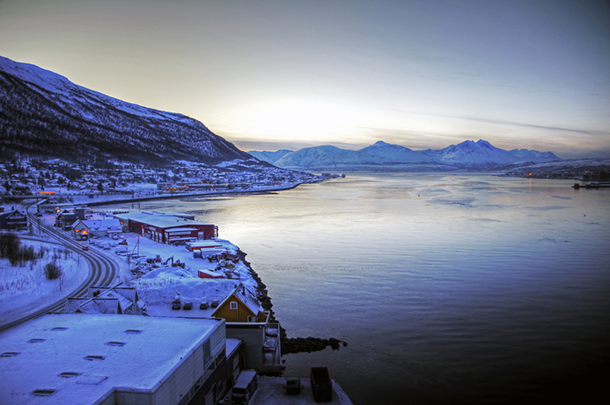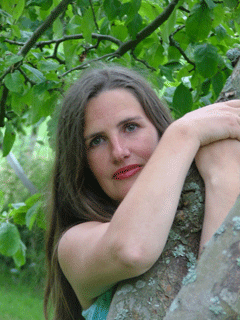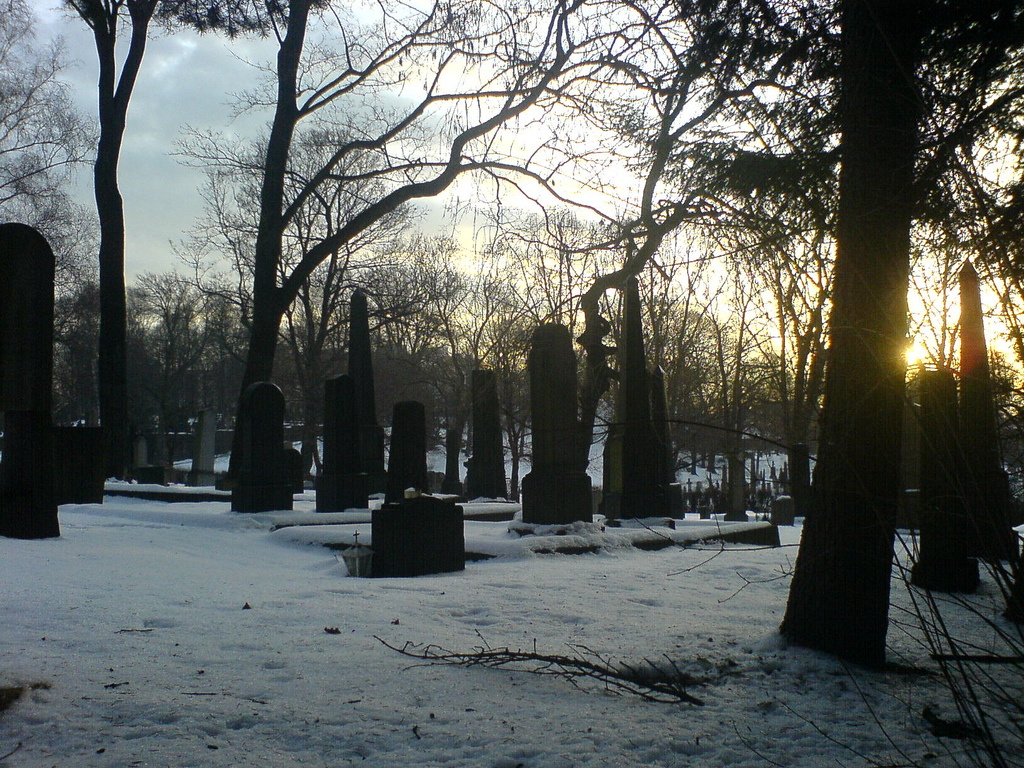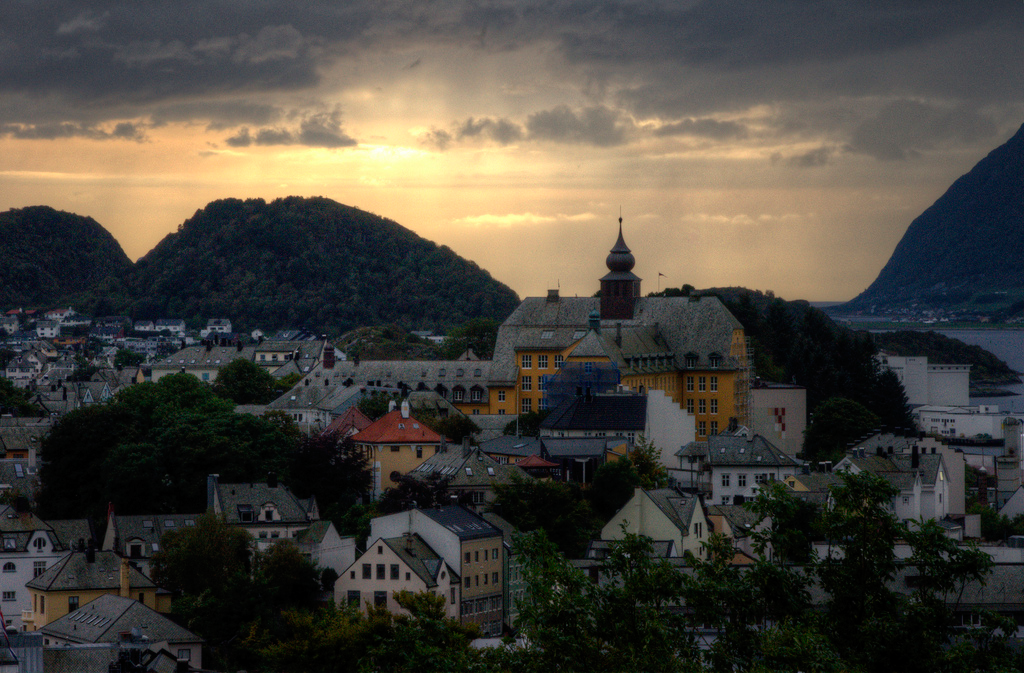A Chilling Norwegian Draugen Tale
Air Date: Week of January 2, 2015

The coastal town of Tromsø in January. (Photo: Mariusz Kluzniak; Flickr CC BY-NC-ND 2.0)
You never know what might be lurking in the freezing fjords of Northern Norway on a winter’s eve. Storyteller Heidi Dahlsveen shares Norwegian folktales to lighten even the darkest winter night.
Transcript
CURWOOD: From the Green Isles of Angus the Ever Young, we head North and East now, to Norway. In Oslo at this time of year the sun rises around ten in the morning and sets at four in the afternoon, and there are parts further North that are in darkness 24 hours a day. Heidi Dahlsveen is a storyteller from a small island off the coast of Norway. She joins us now from Oslo, where she teaches storytelling at the Oslo College of Drama and Communications.
Heidi, Welcome to Living on Earth.
DAHLSVEEN: Thank you.
CURWOOD: Now, Heidi, your grandfather was a storyteller?
DAHLSVEEN: Yes, in one way you could say that, he loved to tell stories at least. But he mostly told stories from his own childhood and trying to keep the culture from his own time; teaching us about things on the island which we should avoid or where we should go etcetera and using stories to teach us.

CURWOOD: What’s the one thing that you remember your grandfather teaching you, telling you the story?
DAHLSVEEN: He told us to avoid the well. I mean when you live on an island you have to be aware about the water. So he taught us about this, we have this strange well. I don’t know how to describe it. It’s not in a circle with stones around it but just huge wells, where the rain can come down. And he taught us about a creature called a Nekken who lived in there and who we should be really afraid of because he would take us down to his home, for instance.
CURWOOD: Ohhh (laughs)
DAHLSVEEN: Yes. So, that’s why we stayed alive, we stayed away from being drowned.
CURWOOD: Now Heidi you have a story that begins on a cold, dark, arctic night. You call it Draugon and the Keg. Now, how do I say it, not dragon, because the English word is dragon, but this word is...
DAHLSVEEN: Draugen
CURWOOD: And I’m sure we’ll learn what the draugen is. Please tell us your story.
DAHLSVEEN: I live in a part of Norway where it is not so dark. I mean it’s dark, but up North it’s even worse; it’s dark 24 hours. And this story happened in a place up north. And there lived a rich farmer, he owned a lot of land and a lot of animals and his farm was only ten minutes away from the fjord, the sea. So, he was also a fisherman with a few boats. And the boats were tied to the pier in the fjord. And he was what we would call in Norway, a fish farmer. And this farmer he needed a lot of helpers and workers to work on his farm. And he was a good man. He paid his helpers good and made sure they had everything they needed. The helpers and the workers they lived in a small house on the farm next to the main house in a house we call draingessteur.
And the story starts on a day when it’s time for a change; a day when the sun soon will return, a day we now call Christmas Eve. The working men were sitting in the little house. They just had been eating a good meal and was now sitting drinking liquor, burning liquor. And they enjoyed the time, talking telling but suddenly their glasses were empty. The bottles were empty and the night was still young. The farmer told them that they could go on drinking. There was more liquor stored in one of the boats tied in the fjord but it was a dark dark time. It was Christmas Eve. It was cold, dark outside and nobody felt like taking this ten minutes walk down to the fjord.
Among the working men there was a young man eager to prove that he was a man like the others. He jumped up and said, “I will do it. I will go down and I will get us all something to drink.” So he grabbed his warm coat, put on some heavy boots, a cap on his head, he picked up the keg and the other men cheered him as he left the warm house and stepped into the cold dark night.
And it was cold outside. The snow was covering the landscape and made the darkness lighter and the snow was hard so he could hear his own boots on the snow going like, CRUNCH CRUNCH CRUNCH. And the young man could see his own breath streaming out of him. And he walked until he reached a church and the churchyard, the church yard was surrounded by a fence built by stones put on top of each other. And it would have been much easier, much quicker for him to jump over the fence and run through the churchyard.
But it was the darkest night and he didn’t feel like doing it so he walked around and finally he reached the fjord. He could hear the sound of the small waves. He could feel the strong salty smell. He walked on the pier towards the boat. He jumped into the boat, filled the keg. He even took a sip himself. And the strong liquid warmed him, even out to his fingertips.
And he had just stepped out of the boat when he heard a sound. SLLLUUUURRRPP. And he slowly looked up and when he saw what he saw he was petrified. He looked straight at the fisherman’s and the sailor’s greatest fear; death itself. Draugen was standing in front of him and blocking his way. Draugen; once he was a brave fisherman or a sailor, too brave and head strong, with no respect for the ocean. He tried to steer his boat against the will of the ocean. He tried to conquer the ocean and was himself conquered by it. He drowned and came back as Draugen.
Draugen still carrying the dead man’s flesh, skin and clothes. Draugen. And because he had been so head strong and headless, he was now missing the head. Instead of the head it was sea tangle and seaweed on top of his shoulders. So, the young man was staring at this monster. And what could he do? He could not jump into the sea, it was too cold. And there was only one thing he could do. He gathered his strength, took a good grip around the keg, and walked slowly but steadily straight ahead.

The fish farmer sprinted through a Norwegian churchyard trying to escape Draugen, and he called upon the souls of the dead to help save him from the grip of the evil spirit. (Photo: Geir Arne Brevik; Flickr CC BY-NC-SA 2.0)
And when he was so close to Draugen that he could feel the rotten smell he ran. And with all his force he pushed Draugen into the water and SPLASH Draugen was in the water and the young man he went on. He did not run but now he heard the sound behind him. He looked over his shoulder and he could see not one, not ten Draugen but the whole seashore was covered with the monsters and he ran. The young man he ran as fast as he could and he heard them coming closer and closer and soon he reached the churchyard. And he realized that he had to run through the churchyard otherwise they would over take him.
So he jumped over the fence and ran until he was in the middle of the churchyard. Draugen was also over the fence now, but in that moment he heard the bell going DONG DONG DONG twelve times, in the middle of the most dark night on Norway. And the young man, he got an idea. So on the top of his voice he called out, “Please all Christian souls help me.” And immediately he heard the cracking of coffins he heard how the earth was shoveled away. And the young man he started to run again. He jumped over the fence on the other side. He stopped turned and he saw how the dead people stood up from their graves. Some had been dead for a long time; only skeleton was left, others had just died and looked almost as if they were still alive. They grabbed pieces of their coffins, some broke crosses on their graves and they started to walk towards Draugen. And a fight started.
And the young man he turned. He went back to the farm. He went inside the small house; House Draingessteur. Pale, he was sweaty. And without a word he put the keg on the table, took off his clothes, climbed up to the attic and climbed on to his sleeping mattress. And he thought, “I wonder if I will survive this darkness.”
And the next morning he woke up and he thought, “I am not insane.” He put on his nice clothes, went downstairs. He looked out of the window and a small light as if hope was coming back he could see. And he told the other men about what had taken place the day before. They laughed and said he had been dreaming. It was a fantasy. And then they all went to church because it was a holy day. But when they reached the churchyard, all stopped. They stared. They could see how the churchyard was covered with pieces of crosses and coffins mixed with seaweeds and sea tangles.
And the young man wondered, “Hmmm, I wonder who won this fight in this dark night.” And that’s the end.
CURWOOD: So, if you live in a fishing community, a farm fishing community this is the story you here.
DAHLSVEEN: Yes, in that community, as I grew up in it, you are usually used to people losing someone on the sea. I mean the sea takes and the sea gives. I guess in that this creature has been created as a sort of comfort or warning.
CURWOOD: Do people still tell this story today because the fishing industry seems to be just about gone from Norway?
DAHLSVEEN: The storytellers tell that story. The Draugen, I think for children for instance, I think is disappearing as a creature in our minds. Yes, the fishing is disappearing and because the fish is disappearing and also because Norway is an oil nation, so it is the storytellers who keep this figure alive.
CURWOOD: You have another story for us about light at this time of year. I was wondering if you could tell that to us now.

The Norwegian town of Alesund at sunset. (Photo: Mariusz Kluzniak; Flickr CC BY-NC-ND 2.0)
DAHLSVEEN: Yes, I will do it. It’s a much lighter story. It’s about this wanderer and as he was walking he came to a hill and he was standing on top of the hill he looked down into a valley. And in this valley he saw a small house. And out of the house he saw a woman running. And in her hands she had a bucket and a cloth. And she was running forth and back and suddenly she stopped and threw the cloth on top of the bucket and then she ran inside the house.
But after a short while he saw the woman running out of the house with a bucket in one hand and a cloth in the other. And again she stopped. She threw the cloth on top of the bucket and inside she ran. And this continued. And the man thought, “What is going on.” So he went down the valley towards the house and as the woman ran out he stopped her and asked, “Excuse me but what are you doing?”
And the woman she looked surprised at him and said, “It is the light. I mean in my old house the light always wanted to be inside my house. But then I built a new house and I cannot get the light inside. She does not want to be there. I’m trying to catch her. I get her inside of my bucket. I run inside the house I let her out and ZOOP she’s out again. She does not like my new house.”
The man looked at the house and now he realized that there were no windows there. They had forgotten to make windows in the house. “Ah,” the man said, “I know a way to get light back to your life.” So he made windows, one in each wall so light could come from every corner of the world. And the woman, she was so happy. She paid the man well and he went on, knowing that light is somewhere out there, if you’re open for it.
CURWOOD: (laughs) That’s a great story and calls on a traditional character in Norwegian folklore: the wanderer. This person often comes up, why is that? And who is the wanderer?
DAHLSVEEN: There’s a lot of stories about the wanderer. As we are a long country to get work you had to walk a lot. I remember again, my grandfather, he actually, where I grew up it’s around one and half hour with a car to get to the island where I grew up. And my grandfather remember, he told me how he get to Oslo to get work and how many days it had to take him to walk that distance actually to get some work. So in Norway we live, we used to live, with a big distance between us. And I also say that that’s the reason why we don’t have so many words in our language because we didn’t meet people so often.
CURWOOD: (laughs) And what do you like to do to bring back the light this time of year?
DAHLSVEEN: I want to be together with my closest people; my friends, my children, my family. And have a nice meal and a good wine and light some candles.
CURWOOD: Heidi Dahlsveen is a storyteller from Norway. Thank you so much for your stories and your time.
DAHLSVEEN: Thank you.
Links
The Crick Crack Club, a collection of international storytellers
Living on Earth wants to hear from you!
Living on Earth
62 Calef Highway, Suite 212
Lee, NH 03861
Telephone: 617-287-4121
E-mail: comments@loe.org
Newsletter [Click here]
Donate to Living on Earth!
Living on Earth is an independent media program and relies entirely on contributions from listeners and institutions supporting public service. Please donate now to preserve an independent environmental voice.
NewsletterLiving on Earth offers a weekly delivery of the show's rundown to your mailbox. Sign up for our newsletter today!
 Sailors For The Sea: Be the change you want to sea.
Sailors For The Sea: Be the change you want to sea.
 The Grantham Foundation for the Protection of the Environment: Committed to protecting and improving the health of the global environment.
The Grantham Foundation for the Protection of the Environment: Committed to protecting and improving the health of the global environment.
 Contribute to Living on Earth and receive, as our gift to you, an archival print of one of Mark Seth Lender's extraordinary wildlife photographs. Follow the link to see Mark's current collection of photographs.
Contribute to Living on Earth and receive, as our gift to you, an archival print of one of Mark Seth Lender's extraordinary wildlife photographs. Follow the link to see Mark's current collection of photographs.
 Buy a signed copy of Mark Seth Lender's book Smeagull the Seagull & support Living on Earth
Buy a signed copy of Mark Seth Lender's book Smeagull the Seagull & support Living on Earth

